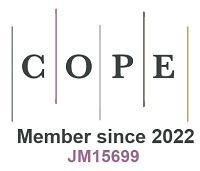Review | Open Access
Functional fluorescent probes for efficient identification and detection of mercury ions based on fluorescence emission, quenching, and resonance energy transfer processes
Views: 17
Chem. Synth. 2025;5:[Accepted].
Author Information
Article Notes
Cite This Article
Abstract
The issue of water pollution caused by heavy metal ions has been receiving increasing attention, particularly in the case of Hg²⁺ ions, which can significantly amplify their biological toxicity through bioaccumulation and stepwise magnification in the food chain. This review systematically summarizes and discusses common construction strategies for functional materials along with their applications in mercury ion recognition and detection. In addition to exploring the construction strategies, this review also delves into the diverse applications of these materials in mercury ion recognition and detection. Whether it's in environmental monitoring, where rapid and accurate detection of Hg2+ is critical for preventing contamination, or in biomedical research, where sensitive detection methods are essential for understanding the role of mercury in biological systems, these materials have demonstrated their versatility and effectiveness.
Keywords
Mercury ion, recognition and detection, aggregation induced emission; fluorescence quenching, fluorescence resonance energy transfer
Cite This Article
Wu D, Zhu Y, Go Y, Wang L, Shi L, Li B. Functional fluorescent probes for efficient identification and detection of mercury ions based on fluorescence emission, quenching, and resonance energy transfer processes. Chem. Synth. 2025;5:[Accept]. http://dx.doi.org/10.20517/cs.2024.78
Copyright
© The Author(s) 2025. Open Access This article is licensed under a Creative Commons Attribution 4.0 International License (https://creativecommons.org/licenses/by/4.0/), which permits unrestricted use, sharing, adaptation, distribution and reproduction in any medium or format, for any purpose, even commercially, as long as you give appropriate credit to the original author(s) and the source, provide a link to the Creative Commons license, and indicate if changes were made.












